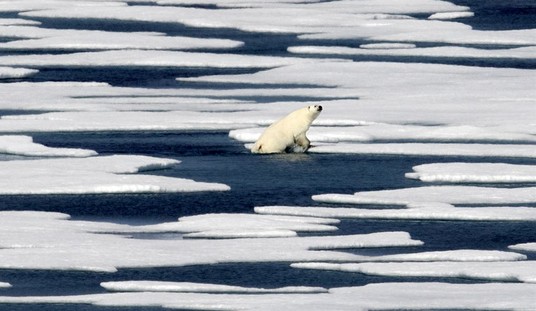After fully seven years of nuclear hide and seek, suddenly Iran has a credibility problem.
According to the Iranians, funds were allocated to launch the project in the second half of 2007 — but the Islamic Republic did not notify the agency about the facility’s existence until September 2009. That delayed declaration, the IAEA politely noted, “reduces the level of confidence in the absence of other nuclear facilities under construction and gives rise to questions about whether there were any other nuclear facilities not declared to the agency,” the report said.
In other words, a pattern of secrecy persists when it comes to Iran’s nuclear ambitions. And unless Tehran shifts gears, “the Agency will not be in a position to provide credible assurance about the absence of undeclared nuclear material and activities in Iran.”
There’s actually no mystery as to whether they have some other secret nuclear sites; there must be at least one more, or even an entire “network of facilities,” or else the now un-secret enrichment plant at Qom is useless. (The NYT notes that point in today’s story, to its credit.) The question is how many more and what purposes the various secret sites serve. Which is my cue to remind you, for the umpteenth time, that even the notoriously dovish 2007 NIE on Iran revealed suspicions of up to 15 undiscovered facilities.
And as I’ve also reminded you before, but which is being confirmed anew by nuclear experts today, there’s no logical peaceful purpose for the un-secret Qom site:
The report offered no estimate of the new plant’s capabilities but a senior international official familiar with the watchdog agency’s work in Iran said that it appeared designed to produce about a ton of enriched uranium a year. That would be enough for a nuclear warhead but too little to fuel the nearly finished plant at the southern port of Bushehr and other civilian reactors Iran is planning to bring on line in the coming years.
Supposedly the plant won’t be ready until 2011, evidence of which is the fact that there are currently no centrifuges installed there. Minor problem: We’ve already been told by one proliferations expert that the long lead time given to Iran before the UN inspected the plant gave them plenty of opportunity to hide incriminating evidence and remove infrastructure to make the facility look less operational than it might actually be. One interesting detail as to timing, though. Remember the reports of how the U.S. invasion of Iraq spooked Iran into making a peace offer, which Bush ended up rejecting? Note the timeline:
In fact, it appears that the construction of the plant began much earlier, and the inspectors’ report noted that satellite imagery shows work began “between 2002 and 2004,” or shortly after the revelations about the existence of Natanz, which was also built underground. That construction paused in 2004, shortly after the Iraq war began, the report indicated, but “were resumed in 2006.”
The geopolitical significance of that timing is unclear. But in 2006, the Bush administration indicated a greater willingness to negotiate with Iran if it first complied with three United Nations Security Council resolutions to halt enrichment activity at Natanz. Iran refused, and the report indicated it now produced about 3,900 pounds of low-enriched uranium, enough for one to two weapons if it was further enriched.
Cause and effect or coincidence? Only Khamenei knows, but note Ahmadinejad’s comments today about what Iran’s prepared to do if its demands aren’t met in negotiations. Every time we reach out, that clenched fist seems to clench a bit harder, doesn’t it?









Join the conversation as a VIP Member